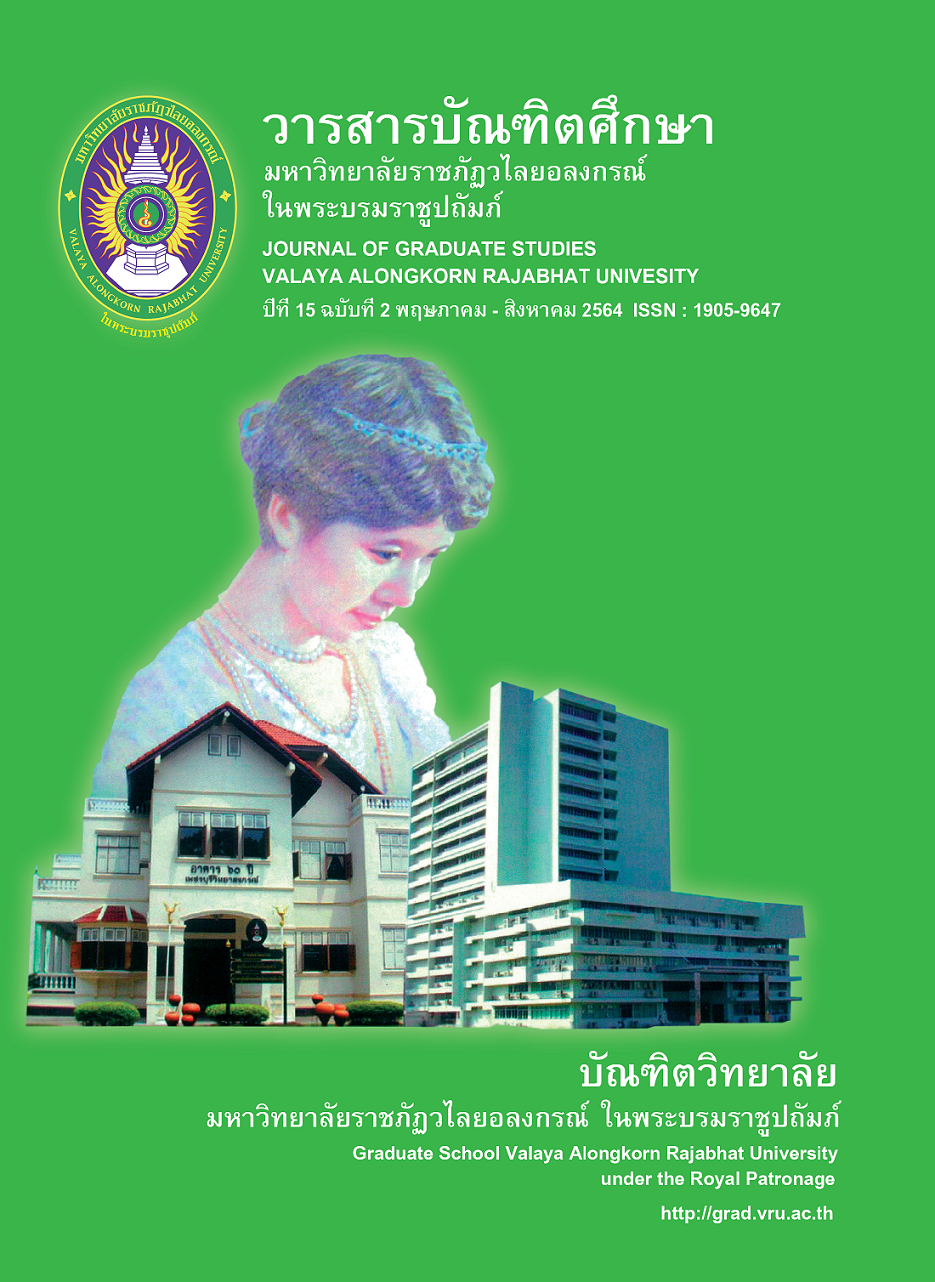BACKGROUND AND DYNAMIC OF THAI ROYAL CUISINE
Main Article Content
Abstract
This article aims to study the background and dynamic of Thai royal cuisine, which is part of the study “The Cultural Invention of Thai Royal Cuisine in Creative Economy” by qualitative research methods. Under the conceptual framework of invented and creative economy. Collect data by interviewing a group of purpose sampling with researcher and expert on food culture, entrepreneur, chef and related people in the research area were 37 samples. The research tools used were the semi-structured interviews together with analyzing the information obtained from the document. Use description analysis methods to interpret, create conclusions.
The results of the research showed that (1) Traditional Thai royal cuisine that still shows the cultural layout is the variety of ingredients, cooking, food containers and balance of the mellow taste. (2) Selection of accepting and adjusting food culture from foreign countries delivering both direct and indirect effects to the Thai royal cuisine, and (3) The food set is an important in cultural pattern. Another finding is that, although both of the Thai royal cuisine and villager cuisine are similar, but different in meticulousness and certain eating traditions.
Article Details

This work is licensed under a Creative Commons Attribution-NonCommercial-NoDerivatives 4.0 International License.
บทความทุกเรื่องได้รับการตรวจความถูกต้องทางวิชาการโดยผู้ทรงคุณวุฒิ ทรรศนะและข้อคิดเห็นในบทความ Journal of Global of Perspectives in Humanities and Social Sciences (J-GPHSS) มิใช่เป็นทรรศนะและความคิดของผู้จัดทำจึงมิใช่ความรับผิดชอบของบัณฑิตวิทยาลัย มหาวิทยาลัยราชภัฏวไลยอลงกรณ์ ในพระบรมราชูปถัมภ์ กองบรรณาธิการไม่สงวนสิทธิ์การคัดลอก แต่ให้อ้างอิงแหล่งที่มา
References
Chulalongkorn, King of Siam, Trans. (2002). tamrā tham kapkhāo farang [Western cook book] (3rd ed.). Bangkok: Amarin Printing & Publishing.
Chulalongkorn, King of Siam, Trans. (2004). sadet praphātton rattanakōsin sok nưngrō̜iyīsiphā [King Chulalongkorn’s second travels to Siam in 1906]. Bangkok: Amarin Printing & Publishing.
Eiamprapai, W. (2010). watthanatham čhārīt khō̜ng chāowang sūansunantha nai bō̜ribot kān plīanplǣng bǣp tawantok [Traditional Culture of Suan Sunandha Residents in Westernization Contexts]. Research report, Suan Sunandha Rajabhat University.
Kanokpongchai, S., Youngrod, W., Ongvudhivet, T., Udommangala, J., & Sakotwatmakin, P. (2003). ʻāhān : sap læ sin phǣndin Thai [The food : Property and Fine arts of Thailand] (2nd ed.). Bangkok: V. Print.
Kongpan, S. (2016). ʻāhān thī hāi pai kapkhāo kǣng Thai [The lost recipe, side dish Thai curry]. Bangkok: S.S.S.S.
Na Thalang, S. (2016). “khati chon sāngsan” : bot sangkhro̜ læ thritsadī [“Creative folklore” : synthesis and theory]. Bangkok: Princess Maha Chakri Sirindhorn Anthropology Centre (Public Organisation).
Nitiworakarn, S. (2014). ʻāhān Thai : mō̜radok thāng watthanatham khō̜ng chāt [Thai Food: Cultural Heritage of the Nation]. Academic Journal Phranakhon Rajabhat University, 5(1), 171-179.
Panthura, G. (2007). ʻēkkalak khō̜ng ʻāhān Thai chāowang : kān khong yū læ kān songsœ̄m khunkhā [The Identity of Royal Thai Cuisine: Persistence and Promoting Value]. Research report, Suan Sunandha Rajabhat University.
Sonakul, S. M. C. (1959). Everyday Siamese Dishes. Bangkok: Prachandra Press. Sujachaya, S. (2017, July-December). ʻāhān Thai samai krung sīyutthayā [Thai cuisine during the Ayutthaya period]. Humanities journal, 24(2), 1-29.
Sujachaya, S. (2017, July-December). ʻāhān Thai samai krung sīyutthayā [Thai cuisine during the Ayutthaya period]. Humanities journal, 24(2), 1-29.
Yodavudh, L. (2011). Krung Thēp bon fang thān hǣng watthanatham [Bangkok on the cultural side]. Bangkok: National Office of Buddhism.


